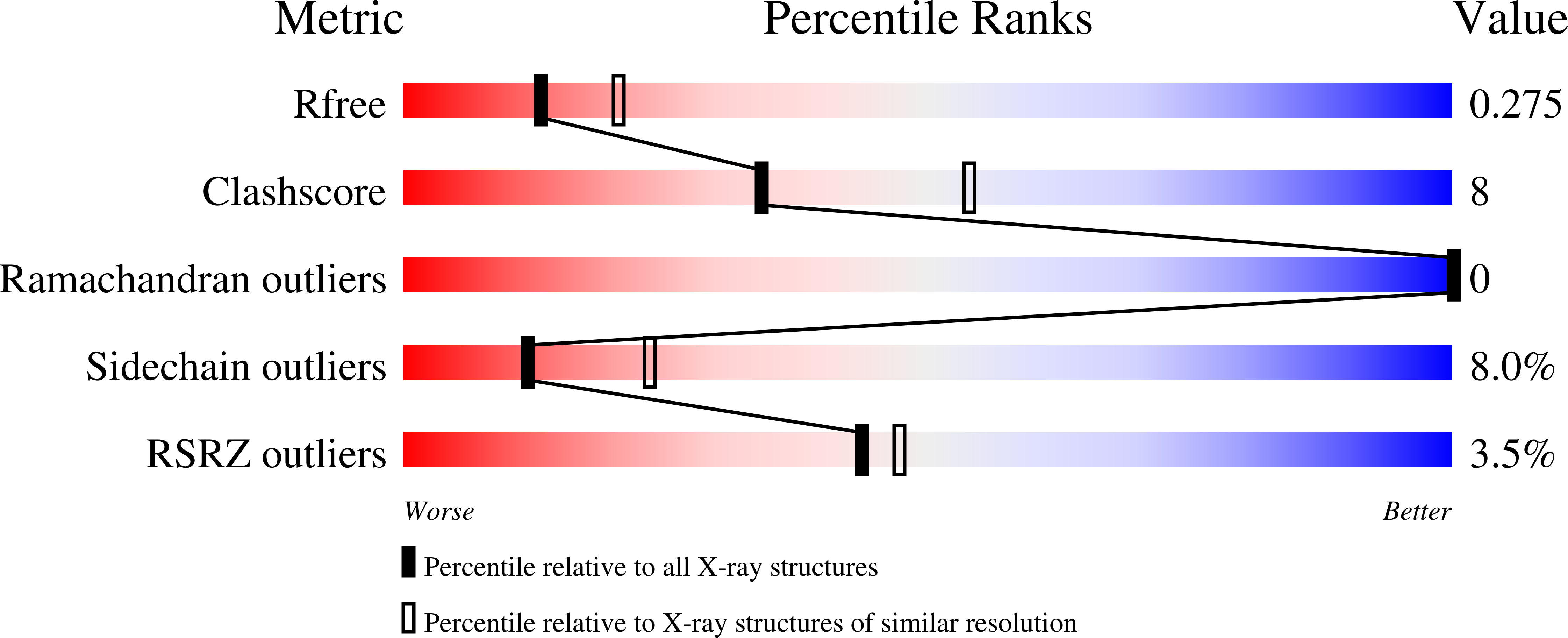Galactose recognition by a tetrameric C-type lectin, CEL-IV, containing the EPN carbohydrate recognition motif
Hatakeyama, T., Kamiya, T., Kusunoki, M., Nakamura-Tsuruta, S., Hirabayashi, J., Goda, S., Unno, H.(2011) J Biological Chem 286: 10305-10315
- PubMed: 21247895
- DOI: https://doi.org/10.1074/jbc.M110.200576
- Primary Citation of Related Structures:
3ALS, 3ALT, 3ALU - PubMed Abstract:
CEL-IV is a C-type lectin isolated from a sea cucumber, Cucumaria echinata. This lectin is composed of four identical C-type carbohydrate-recognition domains (CRDs). X-ray crystallographic analysis of CEL-IV revealed that its tetrameric structure was stabilized by multiple interchain disulfide bonds among the subunits. Although CEL-IV has the EPN motif in its carbohydrate-binding sites, which is known to be characteristic of mannose binding C-type CRDs, it showed preferential binding of galactose and N-acetylgalactosamine. Structural analyses of CEL-IV-melibiose and CEL-IV-raffinose complexes revealed that their galactose residues were recognized in an inverted orientation compared with mannose binding C-type CRDs containing the EPN motif, by the aid of a stacking interaction with the side chain of Trp-79. Changes in the environment of Trp-79 induced by binding to galactose were detected by changes in the intrinsic fluorescence and UV absorption spectra of WT CEL-IV and its site-directed mutants. The binding specificity of CEL-IV toward complex oligosaccharides was analyzed by frontal affinity chromatography using various pyridylamino sugars, and the results indicate preferential binding to oligosaccharides containing Galβ1-3/4(Fucα1-3/4)GlcNAc structures. These findings suggest that the specificity for oligosaccharides may be largely affected by interactions with amino acid residues in the binding site other than those determining the monosaccharide specificity.
Organizational Affiliation:
Department of Applied Chemistry, Faculty of Engineering, Nagasaki University, Nagasaki 852-8521, Japan.





















